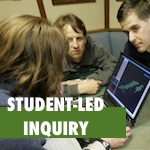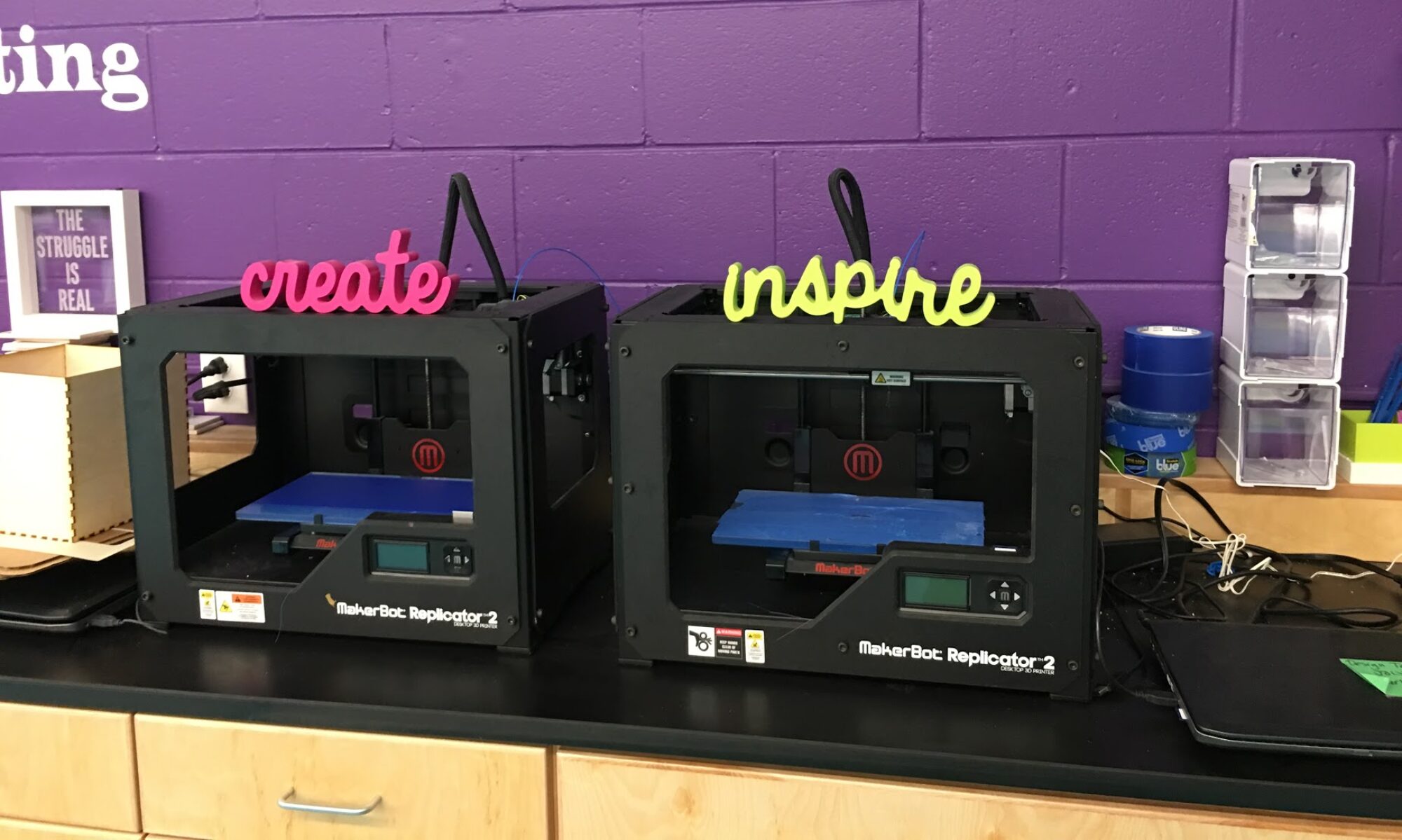What is curiosity?
 Is curiosity important? What does it mean to be a curious learner? What am I curious about?
Is curiosity important? What does it mean to be a curious learner? What am I curious about?
These are some of the questions Cornwall, VT students considered this winter as they embarked on inquiry-based, personalized, research projects. For six weeks, we turned learning over to our students for the (first annual!) Curiosity Projects.
What are Curiosity Projects?
I stumbled onto Scot Hoffman, Mike Jackson, & Sammi Smith’s Google Doc of Curiosity Projects last spring. Their Curiosity Projects are a six-week, inquiry-based research exploration on a topic of personal interest to the student, and culminates in a showcase of student presentations. The project’s goals are for students to “initiate their own learning, gather information, share information, and reflect on their learning.” Teachers become collaborators, guiding students to resources, helping connect them with mentors, and prompting frequent reflection to help students make meaning of their learning.
Launching the projects
My colleagues and I maintained the creators’ vision while fitting the project to our school’s context. We launched the project by sharing video interviews with Curious Learners as well as our own stories of following our curiosities into expertise. We outlined the project for students, gave them a Curiosity Journal, and asked them to brainstorm topic ideas. We also asked them to interview an adult about the nature and importance of curiosity.
After ruminating on topics for a few days, we asked students to choose one, and interviewed each student to help them gauge their passion for the topic.
Many had specific ideas and genuine interest in the topic they wanted to pursue, and others needs more guidance. We reviewed their brainstormed list, probed with questions, and found topics that we could see generated enthusiasm.
We also helped students re-frame some interests to be more personally relevant, such as a student who initially wanted to learn about Taylor Swift. After discussing the root of her interest, she was able to recognize part of her interest was in learning how to become a more successful performance artist herself, and her topic expanded into lessons she could glean from famous performers.
Digging in
Once students had committed to their topic, we worked with them to develop driving questions to guide their research, using resources from the Buck Institute for Education. We explored different avenues students might take to build their knowledge, such as our school and local libraries, experts, and the internet, and introduced students to concept mapping as a way to organize their growing body of knowledge.
It became clear early on that most students were drawn to the using the internet as their primary methodology. We followed their lead and coached them in appropriate use, evaluating and citing sources, and time management.
Mentorship is a also key aspect of the Curiosity Projects.
Students, teachers, and parents collaborated – using a variety of approaches including Front Porch Forum — to find and connect students with mentors who shared their passion. Mentors fulfilled a variety of roles: some students shadowed a local baker, another visited a local recording studio, and several students with physics-based interests interviewed a local physics professor.
Reflecting & sharing
Personal reflection was a key aspect of our formative and summative assessment plan. Using many of the great rubrics and reflection prompts developed by the Buck Institute for Education, students reflected on their driving question, the quality and quantity of information they found, and how their curiosity was unfolding and leading them to more questions. They also reflected on the nature of the project.
Every student indicated that he or she enjoyed the opportunity to focus on a topic of their own choice.
The Curiosity Showcase
The project culminated in a Curiosity Showcase, attended by families, mentors, and the school community. During the showcase, students shared their learning with posters, artifacts, and, in many cases, a Google Slideshow. The event was so popular, we continued it a second day, to give students more time to explore each others’ projects.
How did students respond to the Curiosity Projects? Here, three sixth graders share their impressions of the Curiosity Projects:
Looking forward
Not only were the Curiosity Projects wildly popular with students, but as educators we also saw many best practices — some potential and some realized — in this project. We are committed to making student-centered inquiry a regular part of our curriculum.
Reflecting after the project, we have begun to consider changes we’ll make for next year’s Curiosity Projects. We discovered that some students, and especially our younger learners, need more explicit teaching on how to develop questions and manage all of the information they are learning. We’d also like to help facilitate more mentorships, using Google Hangouts or Skype to expand connections beyond our local community.
The role of technology in Curiosity Projects
After witnessing students’ affinity for and interest in using technology, we hope to integrate more digital tools as well.
Resources such as bubbl.us would allow students to digitally design their concept maps. Our more technologically proficient students, like Jack in the video, may be ready to be introduced to research and annotation tools such as Diigo, Evernote, and Symbaloo. We have also considered the final project and may move away from posters towards a Google Site or infographic created on Easely or Piktochart. The key will be differentiating and carefully selecting the digital tools that best allow the learner to meet his or her goals. No matter what, our students will again find themselves directing their own learning and building upon their skills from previous years.
Stepping Stones
As our students move forward to middle school and beyond, it is our hope that they will meet with opportunities to engage in more self-directed learning and reflection.
Our goal is to build a foundation with this and subsequent rounds of Curiosity Projects, that will nurture the development of curious and engaged learners, who know not only what they are passionate about, but also how to develop their own expertise. In this way, Cornwall School’s Curiosity Projects can be stepping stones on a path toward more personalized learning.


Curiosity Projects: A stepping-stone to Personalized Learning by @emily_hoyler #vted https://t.co/R4hTVWnlJ6
RT @innovativeEd: Curiosity Projects: A stepping-stone to Personalized Learning by @emily_hoyler #vted https://t.co/R4hTVWnlJ6
Not just “genius hour” or “passion projects” but 6 week curiosity projects- YES PLEASE! https://t.co/R3i9cUYFyv via @innovativeEd
RT @innovativeEd: Curiosity Projects: A stepping-stone to Personalized Learning by @emily_hoyler #vted https://t.co/R4hTVWnlJ6
RT @kb4arts: Not just “genius hour” or “passion projects” but 6 week curiosity projects- YES PLEASE! https://t.co/R3i9cUYFyv via @innovativ…
Curiosity Projects: A stepping-stone to Personalized Learning https://t.co/apECYbPe9x @pdbudapest Capstone experience?
Curiosity Projects: A stepping-stone to Personalized Learning https://t.co/5Wm2kGFSFW #alplearn
RT @gjlyman: Curiosity Projects: A stepping-stone to Personalized Learning https://t.co/5Wm2kGFSFW #alplearn
Curiosity Projects: A stepping-stone to Personalized Learning https://t.co/8NwXS0F3t6 via @innovativeEd
RT @mmcenerny: Curiosity Projects: A stepping-stone to Personalized Learning https://t.co/8NwXS0F3t6 via @innovativeEd
RT @innovativeEd: Curiosity Projects: A stepping-stone to Personalized Learning by @emily_hoyler #vted https://t.co/R4hTVWnlJ6
Exciting read. The video isn’t working though.